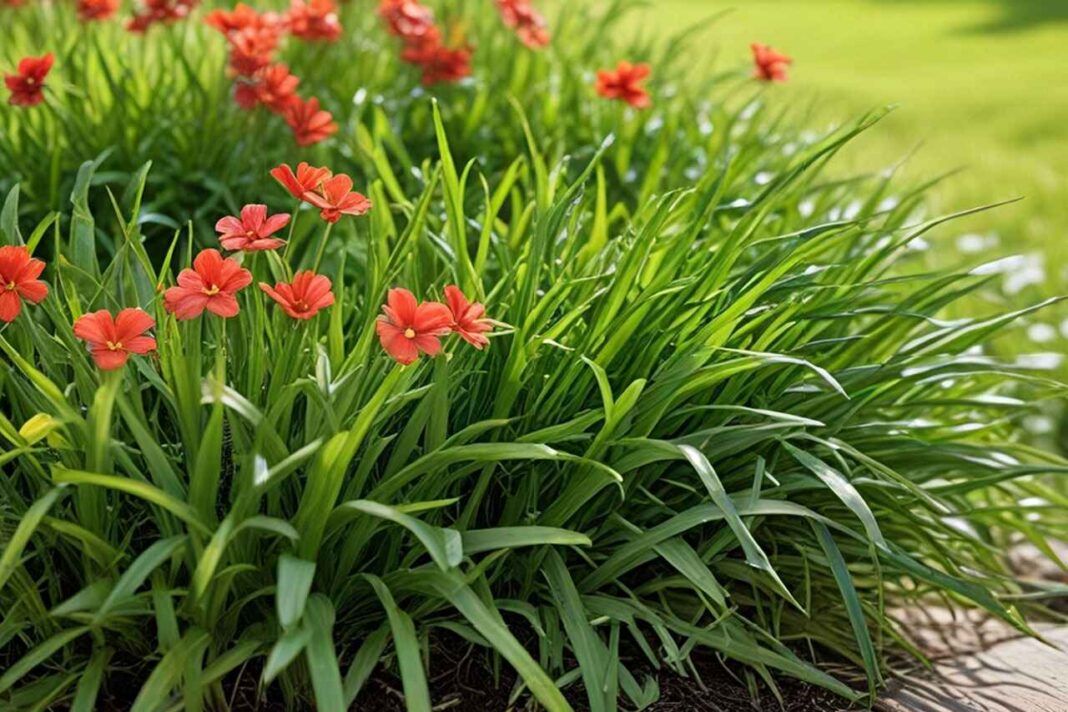St. Augustine grass is a warm-season grass with green-blue blades. It is known to provide dense yet even coverage to lawns. As an adaptable species, the grass can grow in most soil types and weather conditions. It is also a good option for silage—green grass fermented, pickled, and stored as livestock fodder. If choosing to grow this warm-season grass, along with ensuring exposure to direct sunlight, getting the right fertilizers can help with even coverage.
Features of St. Augustine grass
- St. Augustine is a common pasture grass.
- Its blades can grow up to 10 inches in length. They are typically coarse in texture.
- The grass grows well in places with warm temperatures and high humidity. While initially, it needs a lot of sunlight, the grass can grow well in the shade, say under trees.
- St. Augustine is a creeping grass with a deep root system that is difficult to uproot and transplant.
- The grass is known to quickly regenerate if it suffers any damage caused by pets, humans, or machines.
- Three months before the first frost is often considered the best time to plant St. Augustine grass. It is important to provide the grass with complete sun exposure during spring and summer when the temperature is between 80 and 100 degrees Fahrenheit. So, one can check the local weather conditions before planting the grass.
Care tips
Although a sturdy, versatile, and adaptable grass, St. Augustine does require a few things to grow.
- Ensure that the grass is grown in well-drained soil with organic content. Moderately fertile and slightly acidic soil is preferable here.
- Water the grass in the early hours of the morning or late evening. St. Augustine requires a lot of moisture in hot climates. That said, infrequent but deep watering is recommended for better root growth. Overwatering can make the root systems remain shallow, encouraging weed growth.
- Use fertilizers to help the grass get enough nutrients and prevent pest infestation. Some of the top fertilizers for St Augustine grass can be found in granular, powder, or liquid forms. When using a fertilizer, one should follow the instructions on the package and ensure adequate watering and aeration for better absorption of the product’s nutrients.
Best St. Augustine grass fertilizers
St. Augustine requires three major nutrients—nitrogen for leaf growth, phosphorous for root development, and potassium for overall health. That said, these nutrients need to be provided in the right quantities. So, it is important to choose fertilizers that offer the right blend of nutrients to the soil and plant. If a product only offers one of three nutrients, one will need to find an additional option that has the other two key ingredients.
Chemical-based fertilizers typically promise quick and powerful action, but they can damage the soil. A better alternative is organic fertilizers that are sustainable and eco-friendly.
1. Compost
If one is trying to find a way to put garden waste, leaves, or food scraps to good use, one could make compost at home and use it as a fertilizer for St. Augustine grass.
2. Ground alfalfa and soybeans
The alfalfa plant is rich in nitrogen, phosphorous, and potassium. Its grounds can be great natural fertilizers, as they can be spread evenly across the lawn and used to provide the grass with key nutrients. Another option is ground soybeans, as they are rich in nitrogen. Alternatively, one can use bio-enzymes and byproducts of cottonseed or cornmeal.
While plant-based fertilizers are accessible and safe options, one can also switch to animal waste-based manure. Most nurseries and department stores have a range of fertilizers made from the waste products of fish, chicken, and cow bones that can help St Augustine grass grow.
3. Aged and composted animal manure
Composted manure prepared from chicken, cow, or horse waste not only offers nutrition to grass but also promotes the growth of beneficial earthworms and bacteria.
4. Animal bones
Ground animal bones are rich in calcium, phosphorous, and nitrogen. They are known to promote root development.
5. Fish emulsion
This is a liquid, fast-acting fertilizer. One can use this if the lawn or pasture shows signs of drying.
Tips for using fertilizers
- Before applying fertilizer, one must know the exact amount to use, the dimensions of the grass cover, and the growth stage of the grass. Making a note of the area is key for fertilizer application.
- Use the correct amount of fertilizer to get a lush, green lawn or garden. Inadequate fertilizer use will result in slow-growing, dull grass. On the other hand, too much fertilizer can attract pests and encourage excessive weed growth. For reference, one can use one pound of nitrogen for 1,000 square feet of St. Augustine grass.
- The best time for the first application is February to early March. A second application can be scheduled for late spring, toward the end of April and the beginning of May. In extremely hot regions or during intense summers, one must use fertilizers at the end of June or the beginning of July.
- From the end of August to the middle of October, when St. Augustine’s growth is dormant, one should use a slow-release fertilizer to ensure the grass can survive the winter.
